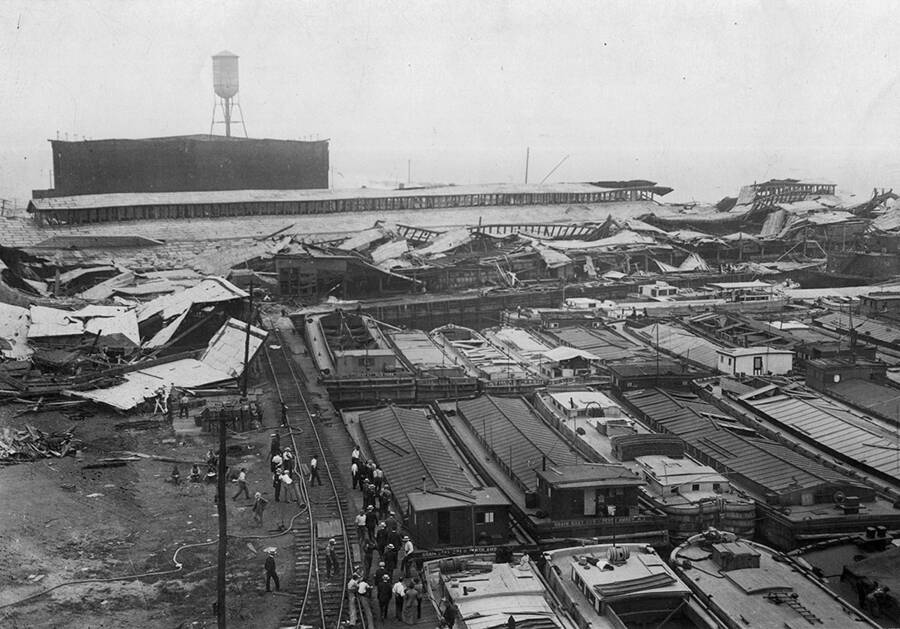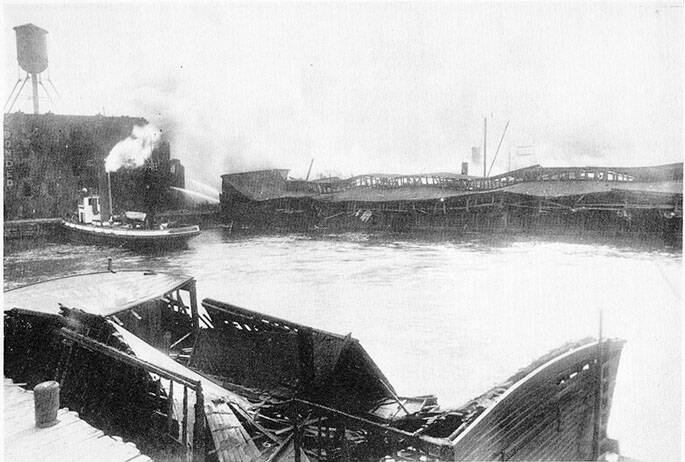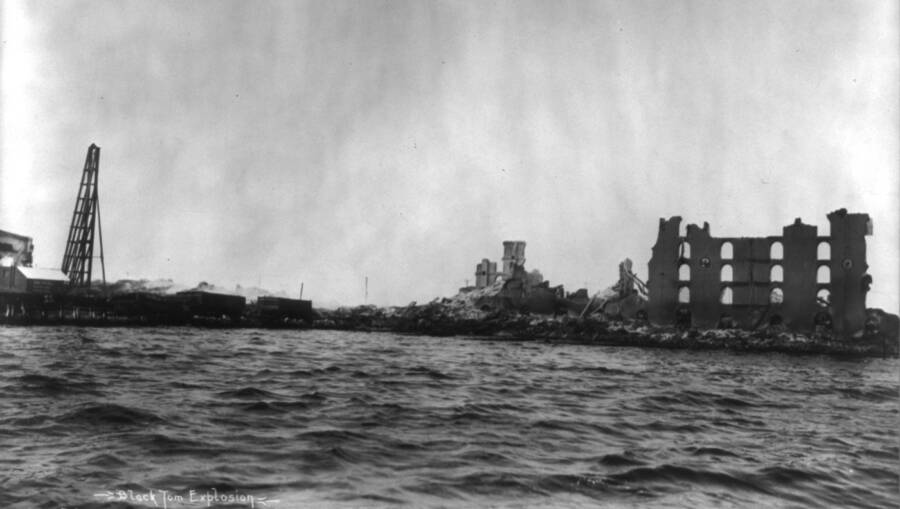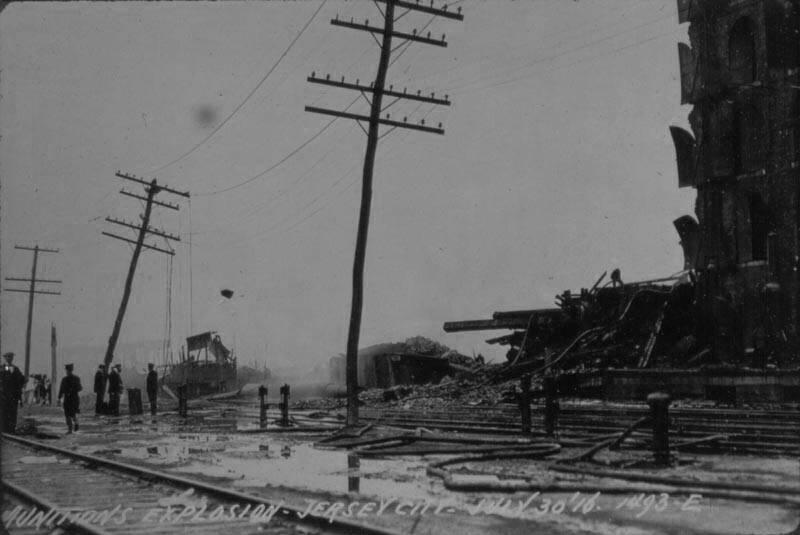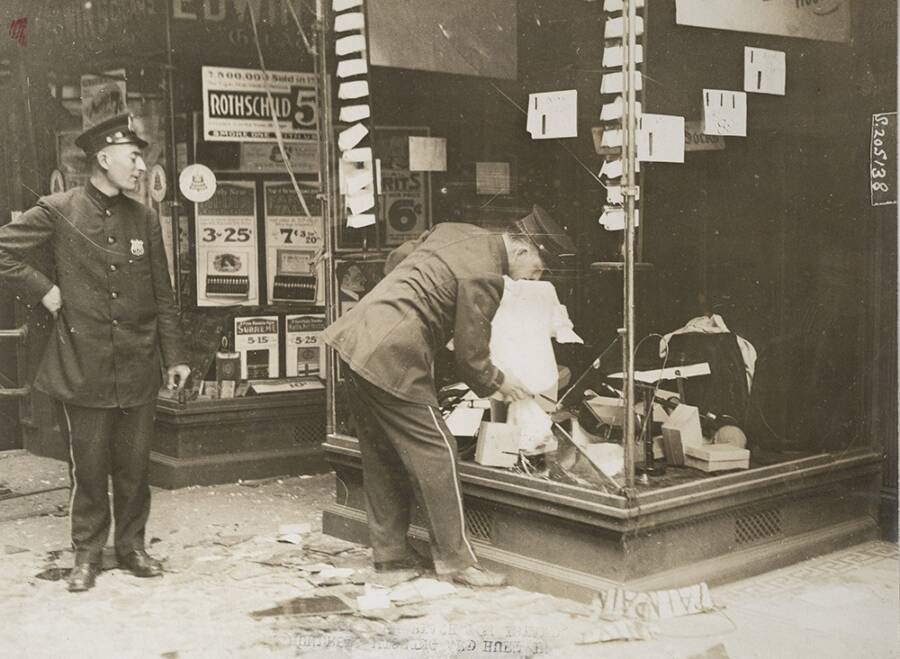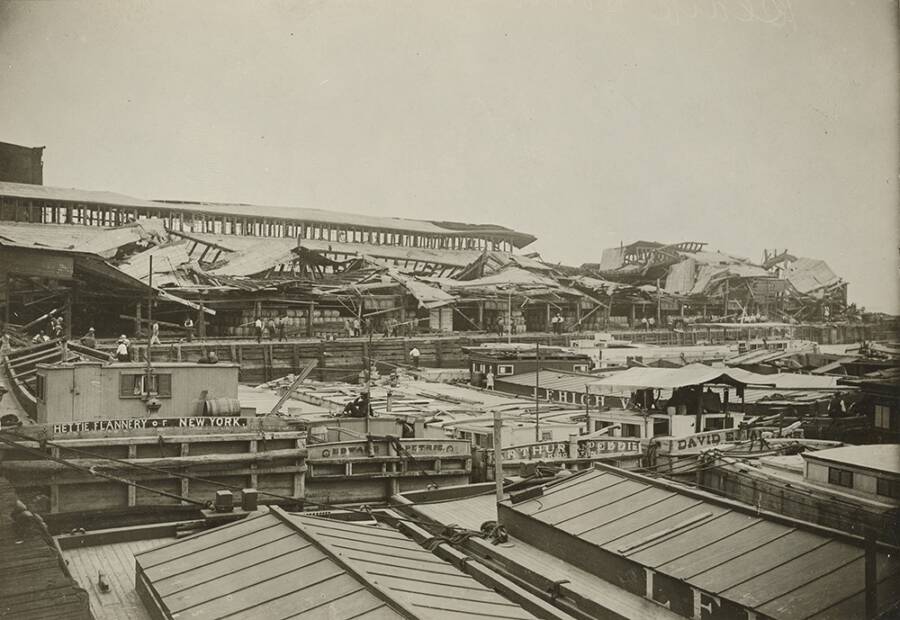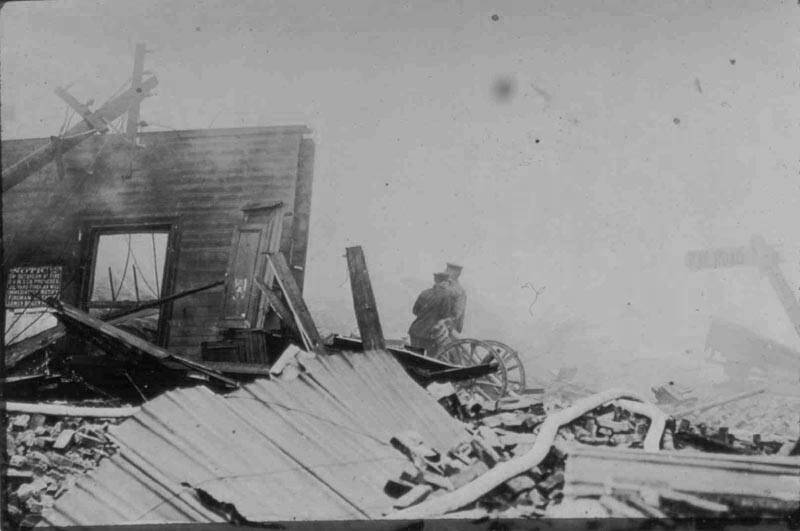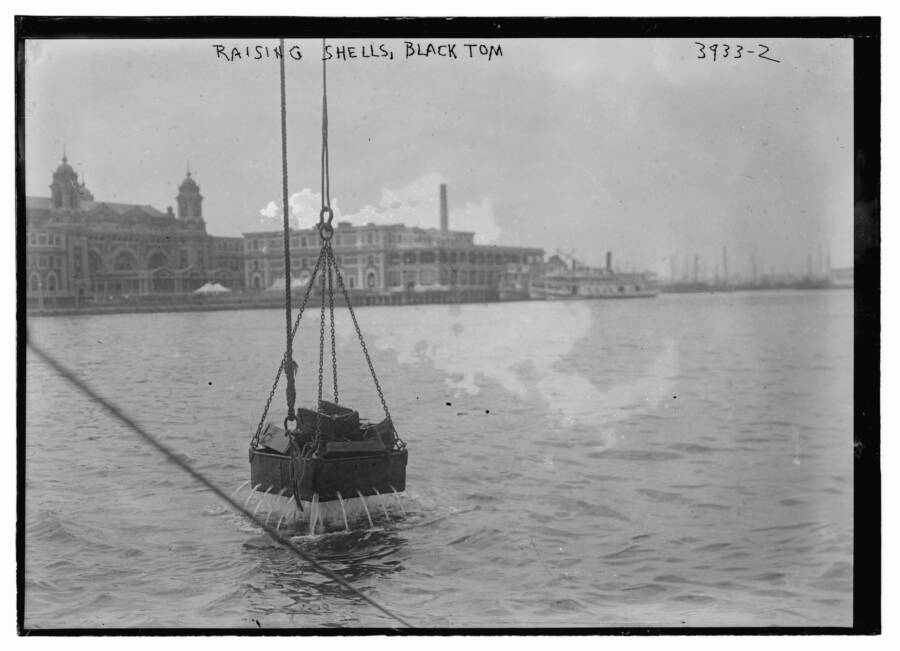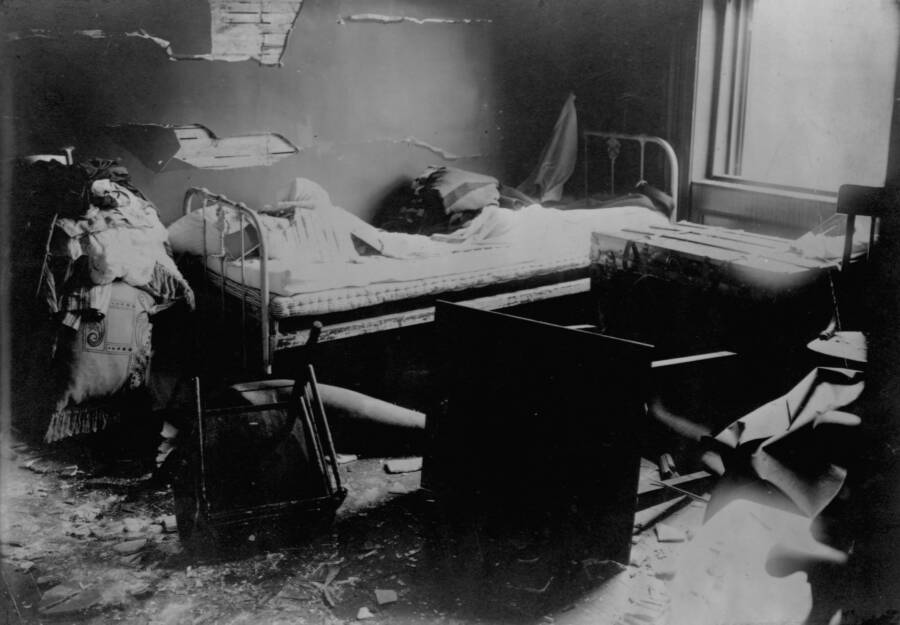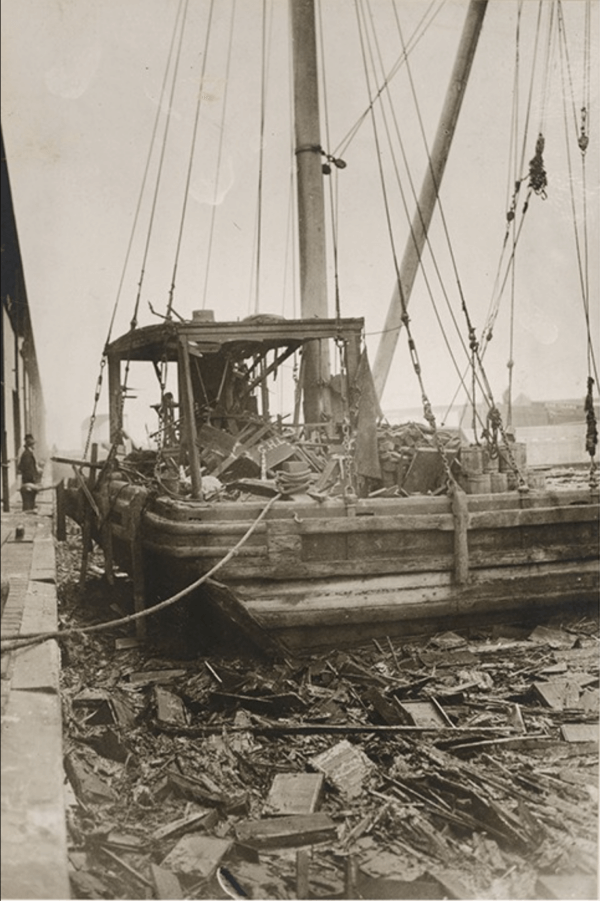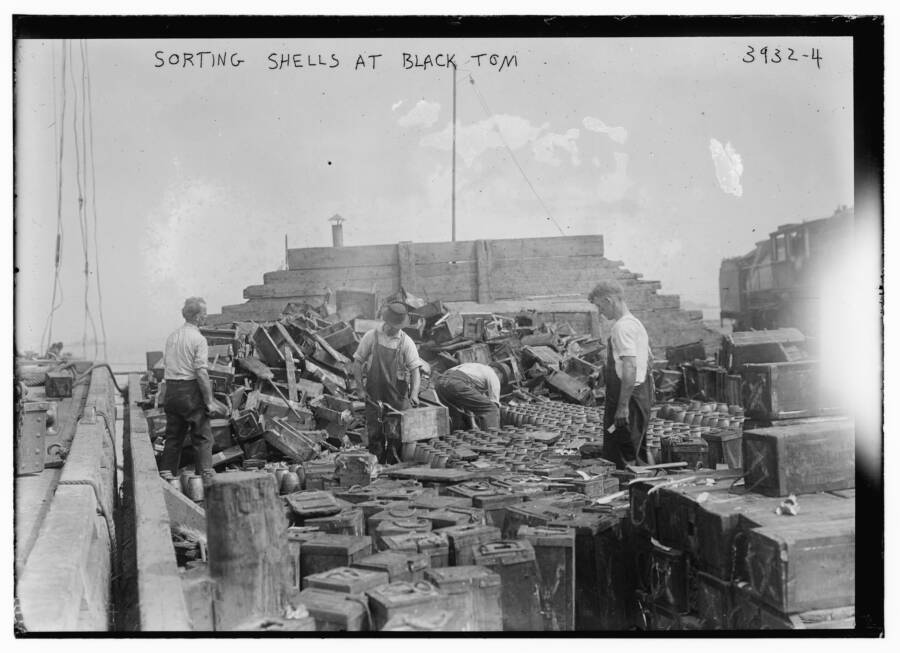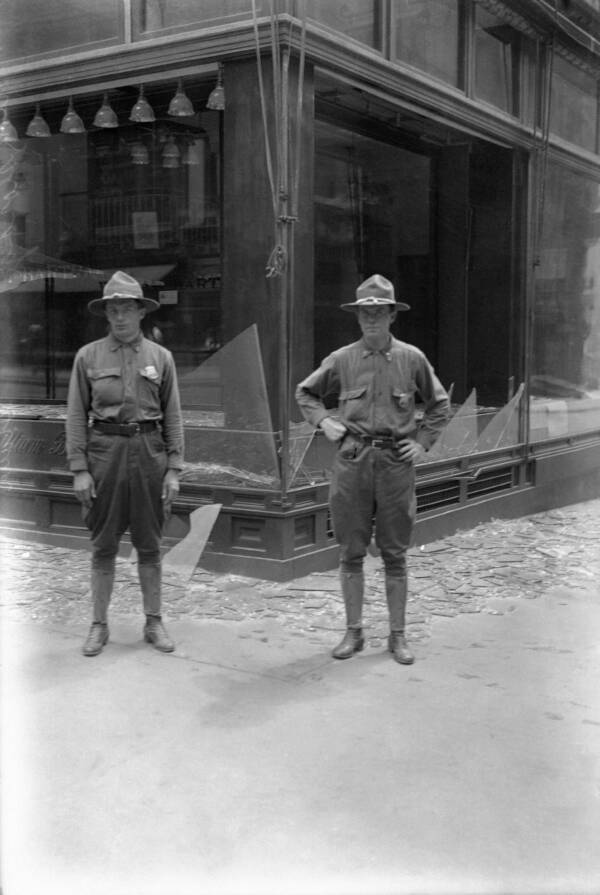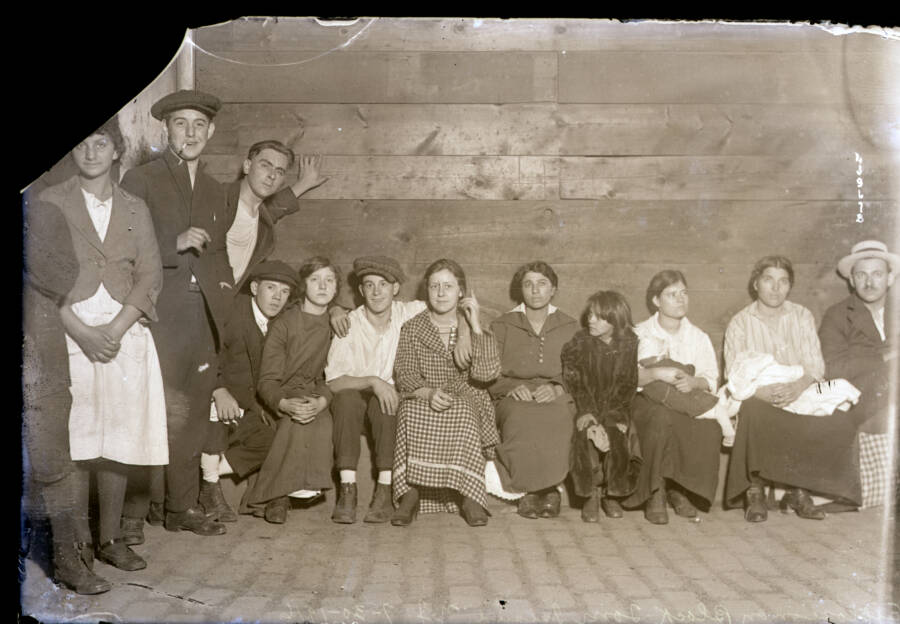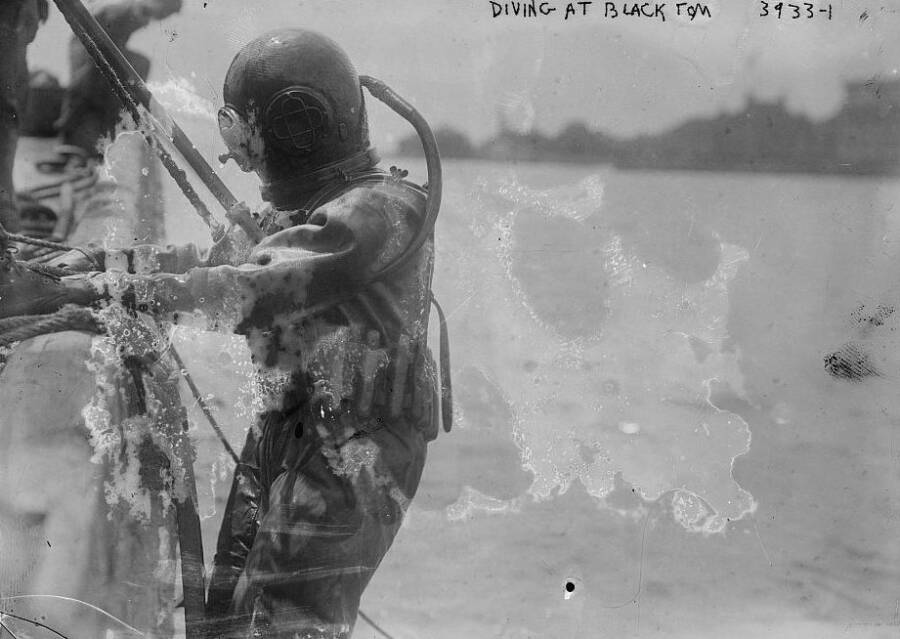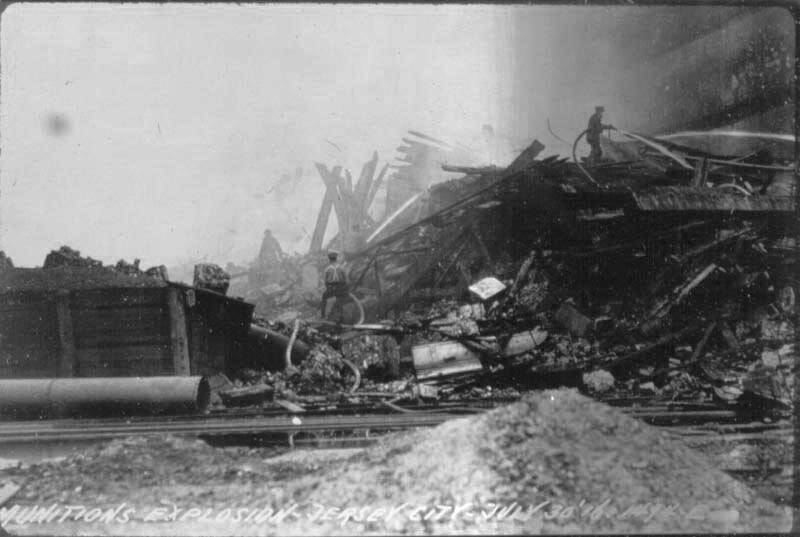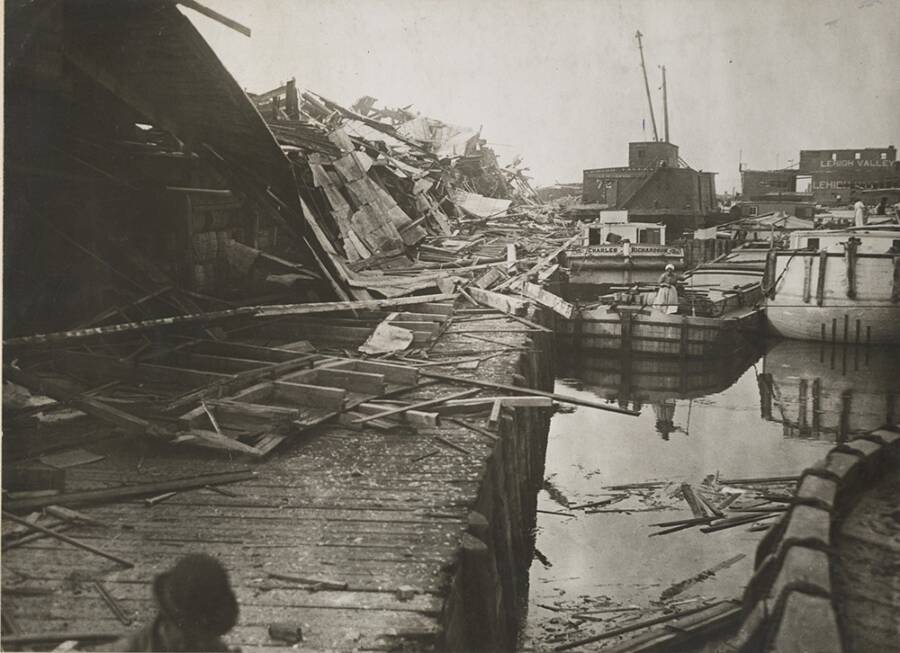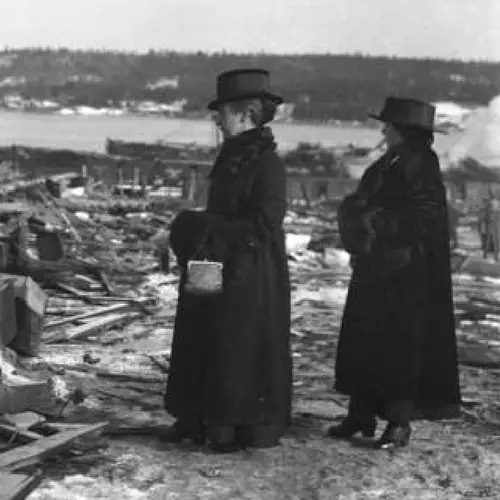During World War I, German saboteurs ignited 2 million pounds of munitions on Black Tom Island in New York Harbor, triggering one of the largest explosions to ever occur on American soil.
On the night of July 30, 1916, America’s largest ammunition depot sat unguarded. Black Tom Island stored freight cars, barges, and warehouses full of explosives. One barge alone held 100,000 pounds of TNTl, and the total weight of the munitions topped two million pounds.
That night, two German spies rowed across New York Harbor, their boat heavy with dynamite. A third spy simply walked into the munitions depot, his pockets filled with cigar-shaped bombs.
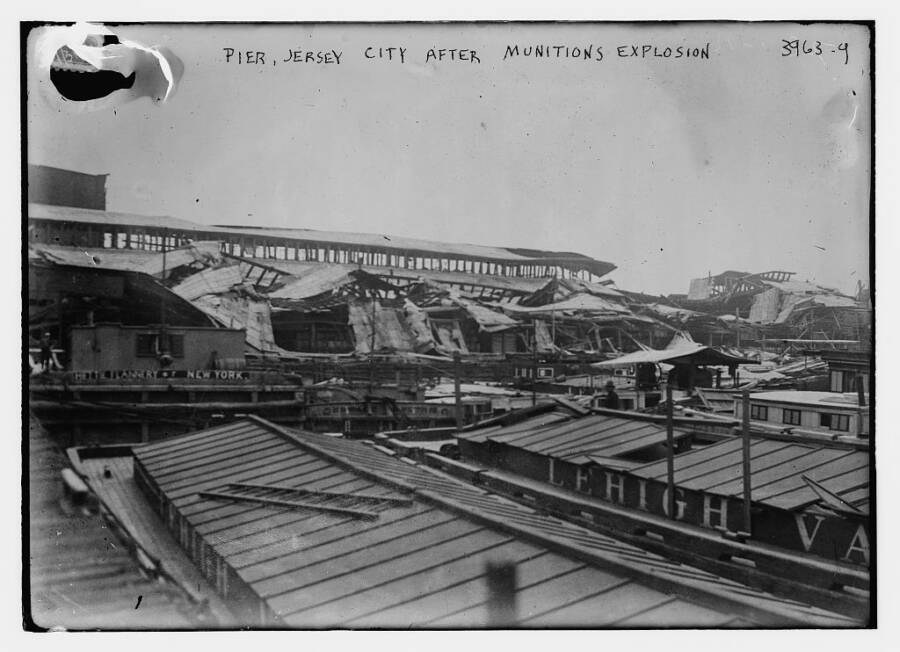
Library of CongressThe damage from the Black Tom explosion stretched across the railroad yard and pier. Shrapnel from the explosion even hit the Statue of Liberty.
No one stopped them. Undetected, the saboteurs lit multiple fires on the island.
Spotting the smoke, guards eventually ran to call the fire department. But it was too late. At 2:08 a.m., an explosion ripped through the night. The blast shattered windows across the harbor in Manhattan and Brooklyn. It tossed Jersey City residents from their beds. And it permanently damaged the nearby Statue of Liberty.
The Black Tom explosion was one of the largest explosions ever to occur on U.S. soil – so why do few remember it today?
The Story Behind The Black Tom Island Explosion
By 1916, World War I had already been raging for two years. The United States remained officially neutral, but the U.S. also sold millions of dollars in weapons to Britain and France. That made munitions depots like Black Tom Island a major target for German saboteurs.
In the summer of 1916, about 70 freight cars sat on Black Tom Island, holding munition shells and TNT that would eventually be unloaded onto barges. Already packed barges sat tied to piers, ready to cross the Atlantic. And not so much as a fence guarded the two million pounds of munitions.
This massive cache of unguarded weapons was an easy target for the Germans, who had already experimented with targeting American ships, factories, and piers.
In fact, it was almost too easy for the spies to infiltrate Black Tom Island. According to North Jersey, after placing bombs along the island, one of the saboteurs fled to his aunt's nearby home, shouting, "Oh, my God, what did I do?"
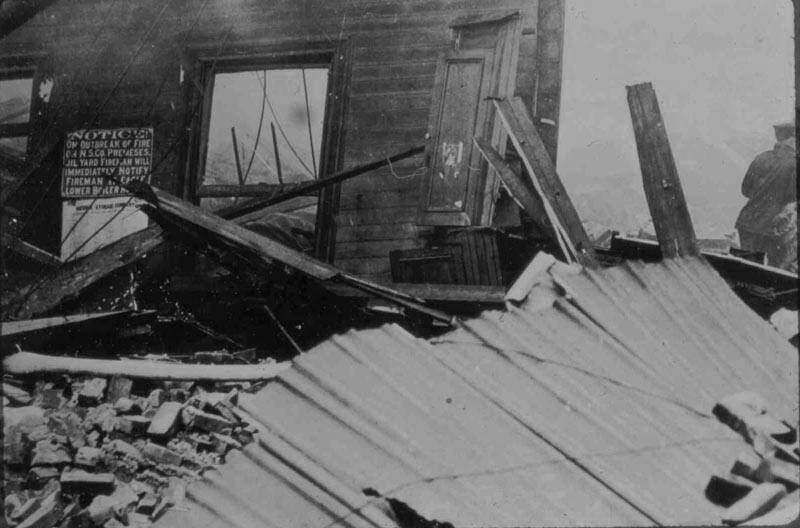
US GovernmentThe next day, a sign warning of fire danger remained in the wreckage left by the explosion.
Eyewitness Accounts Of The Black Tom Explosion
The force of the Black Tom explosion was equivalent to a 5.5 magnitude earthquake. People felt the shockwave as far away as Philadelphia and Baltimore. And after the explosion, multiple smaller blasts continued to rip through the air, the shrapnel and flying bullets making it nearly impossible for firefighters to control the blazing inferno.
Owen Fitzpatrick worked on nearby Ellis Island as a telephone operator. He was lucky to escape with his life.
"The shock was so great that I was thrown off my chair into the hall and the broken glass fell in showers upon me as I lay on the floor," Fitzpatrick said, according to the Natural Hazards Center. "Four shells of three-inch caliber fell on the gravel path in front of the main door and another shell passed through the roof of the coal bunker attached to the power house."
The immigrants waiting for processing on Ellis Island had to be evacuated.
Rocketing munition shells spread the damage well beyond Black Tom Island. From Manhattan, witnesses saw shells shoot across the harbor and explode a mile from the blast site.
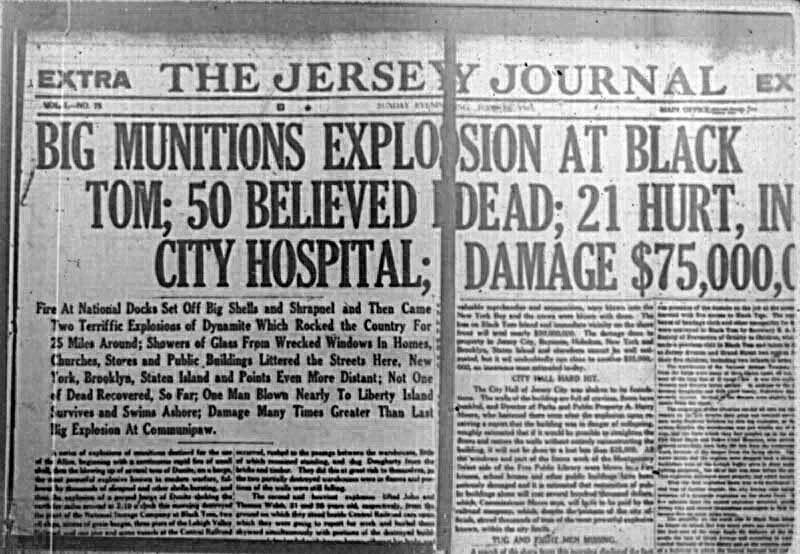
Liberty State ParkFollowing the explosion, the Jersey Journal warned of as many as 50 deaths. Officially, around four people died due to the explosion.
Peter Raceta was captaining a barge in the harbor when the blast shook the air.
"When the explosion came, it seemed as if it was from above—zumpf!—like a Zeppelin bomb," he said, according to Smithsonian Magazine.
As for the other boats Raceta had seen earlier in the night, he said, "It looked as if they all went up in the air."
At the Woolworth building, the tallest skyscraper in the world at the time, watchmen feared that the world was ending. One paper reported that after seeing the blast, watchmen "got down on their knees and prayed."
The Aftermath Of The Blast
The Black Tom explosion did massive damage to the pier. Barges sank, collapsed warehouses buried freight cars, and eventually the entire pier went under. The total damage came to an estimated $20 million – a massive sum in 1916 equivalent to more than half a billion dollars today.
In some ways, it's shocking that the explosion didn't cause more damage. In spite of newspaper headlines claiming that dozens died, the official tally counted four deaths.
But the explosion caused major economic harm. And the Lehigh Valley Railroad, which sustained much of the financial damage, knew who to blame: Germany.
American intelligence agencies tied the Black Tom explosion to German saboteurs. And after decades of debate, Germany agreed to pay reparations for the damage.
According to New Jersey City University, the quest for reparations began with the Lehigh Valley Railroad, which used a 1921 treaty between the U.S. and Germany to request reparations.
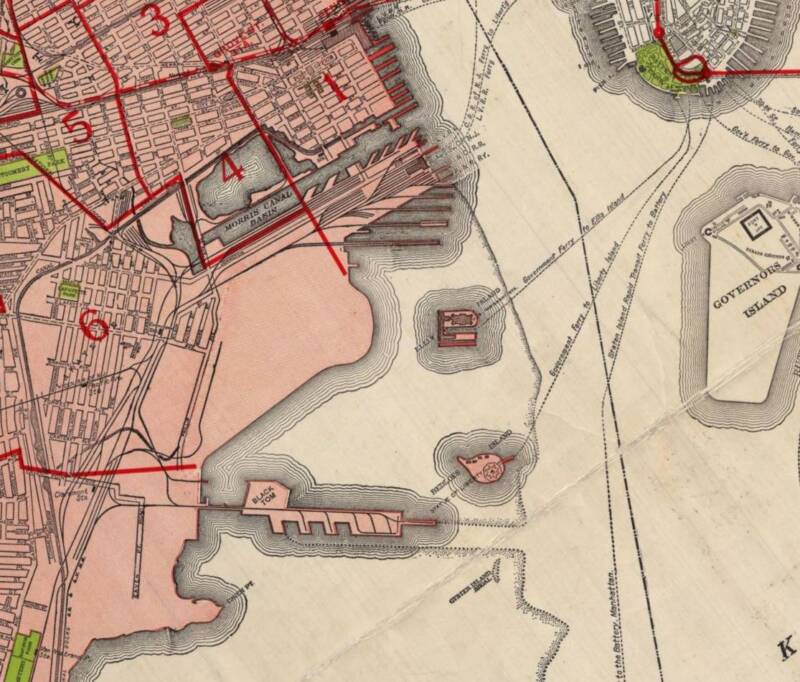
S. Liebmann's Sons Brewing Co.By the 1910s, Black Tom Island was a key shipping port. Nearby Ellis Island had to be evacuated after the explosion, which also damaged the Statue of Liberty.
After years of deliberating, the German-American Mixed Claims Commission ultimately ordered Germany to pay $50 million in reparations. However, that decision came in 1939 – the year Hitler invaded Poland and set off World War II.
In the 1950s, Germany finally agreed to pay the $50 million. The final payment was made in 1979, 63 years after the Black Tom explosion.
The Black Tom Island Blast In Context
In the early 20th century, enemy attacks on American soil were so rare that many assumed the Black Tom explosion was an accident. And no one anticipated that the munitions depot might become the target of enemy agents.
President Woodrow Wilson, locked in a tough reelection battle, downplayed the attack. Per the Council on Foreign Relations, he called the Black Tom explosion "a regrettable incident at a private railroad terminal."
In spite of the magnitude of the attack, Wilson had not wanted to get dragged into World War I. But writing off the explosion as an accident also downplayed its role in American history, and few remember the explosive event today.
Still, the impact of the Black Tom Island explosion is still felt in at least one small way today. After shrapnel from the blast hit the Statue of Liberty, its torch, which was once used as a viewpoint from which visitors could enjoy spectacular views of the city, became unsafe for visitors — and guests are still barred from entering the torch to this day.
After this look at the Black Tom explosion, check out these haunting World War I photos that capture the tragedy of the war. Then, read about how flour caused the 1878 Washburn Mill explosion that killed four people in Minneapolis.
